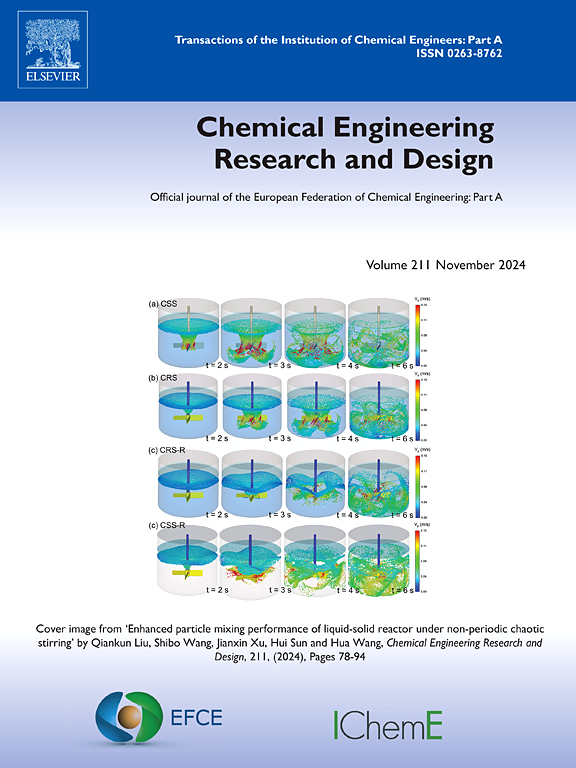Security analysis of ethylene glycol production pathways
IF 3.7
3区 工程技术
Q2 ENGINEERING, CHEMICAL
引用次数: 0
Abstract
In the production process of ethylene glycol (EG), which is considered a crucial basic chemical material, China's energy consumption and carbon emissions are greatly affected. This study examines seven different routes for EG production, focusing on their security implications. To evaluate the security of these production routes, a framework is proposed that considers various aspects of the chemical industry chain involved in EG production. The evaluation is conducted across five dimensions, namely the raw materials, technology, economics, environment, and energy consumption. The results show that CTEG and BTEG processes have advantage of high security performance in the raw materials scenario (R-Scenario). Corresponding, CTEG-2 and BTEG-1 routes have advantage of high security performance in the technology scenario (T-Scenario). NTEG and BTEG routes should be adopted according to environment scenario (E-Scenario). In the cost scenario (C-Scenario) and energy consumption scenario (EC-Scenario), OTEG and NTEG routes have the benefit of superior security capabilities because much better economic performance and low energy consumption compared with other routes. The findings of this study serve as a crucial foundation for enhancing the manufacturing process of EG. Additionally, it aids decision makers in selecting the most appropriate production method for EG, taking into account the prevailing circumstances.
求助全文
约1分钟内获得全文
求助全文
来源期刊

Chemical Engineering Research & Design
工程技术-工程:化工
CiteScore
6.10
自引率
7.70%
发文量
623
审稿时长
42 days
期刊介绍:
ChERD aims to be the principal international journal for publication of high quality, original papers in chemical engineering.
Papers showing how research results can be used in chemical engineering design, and accounts of experimental or theoretical research work bringing new perspectives to established principles, highlighting unsolved problems or indicating directions for future research, are particularly welcome. Contributions that deal with new developments in plant or processes and that can be given quantitative expression are encouraged. The journal is especially interested in papers that extend the boundaries of traditional chemical engineering.
 求助内容:
求助内容: 应助结果提醒方式:
应助结果提醒方式:


